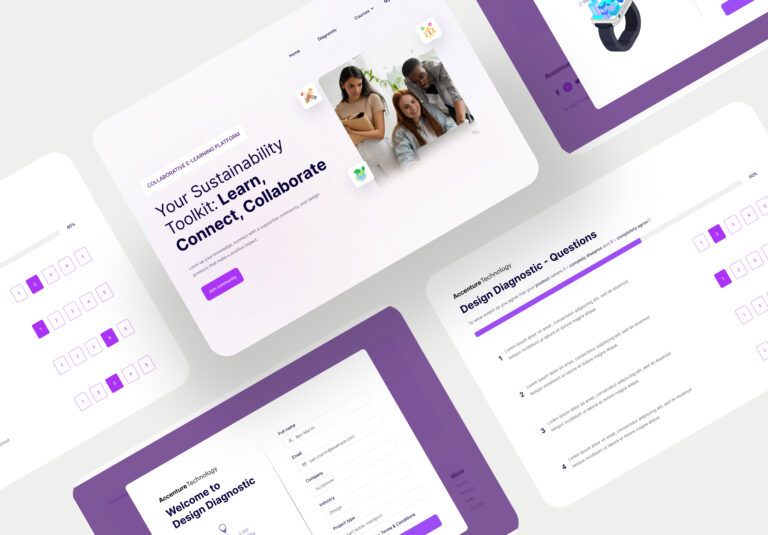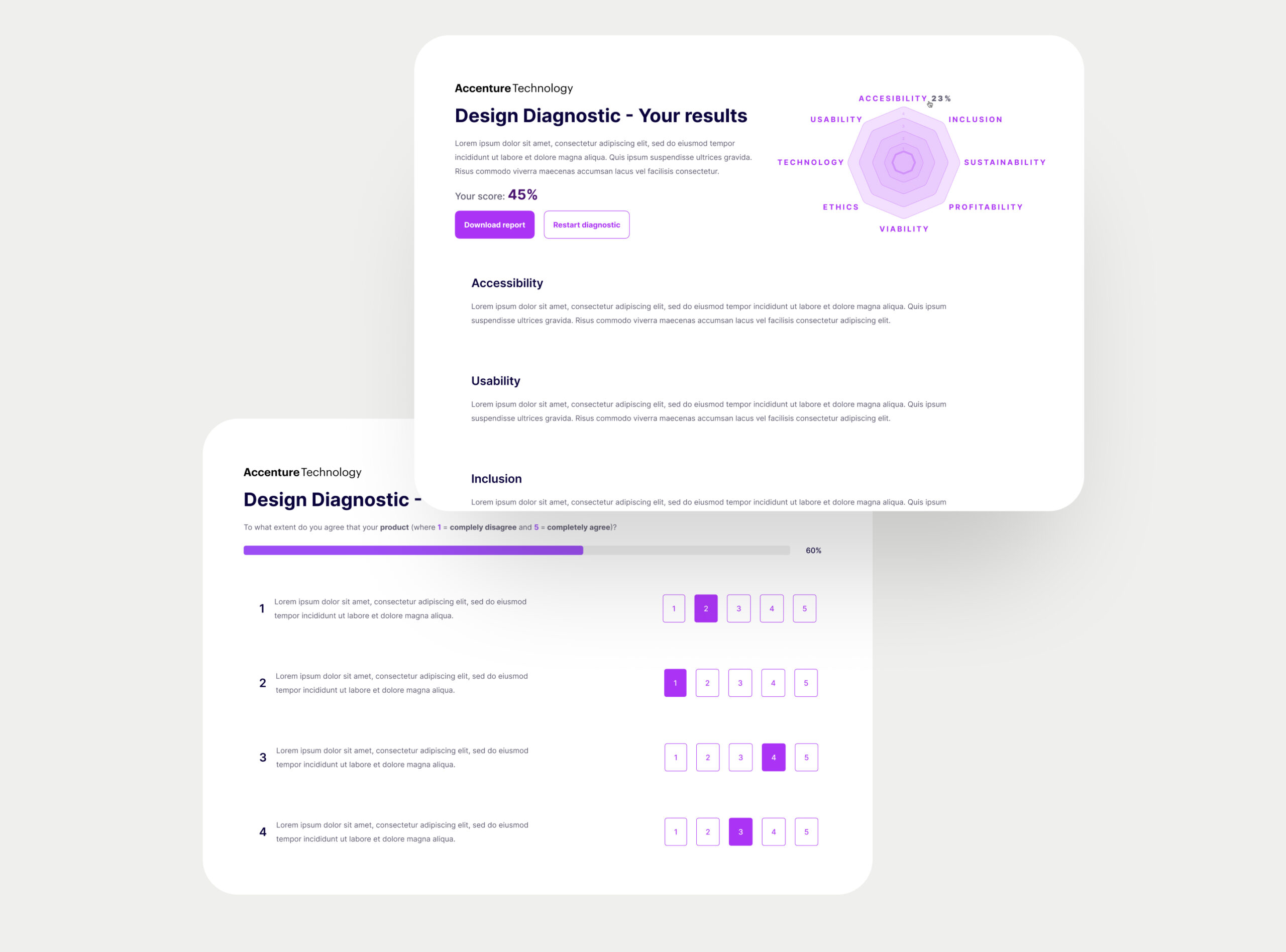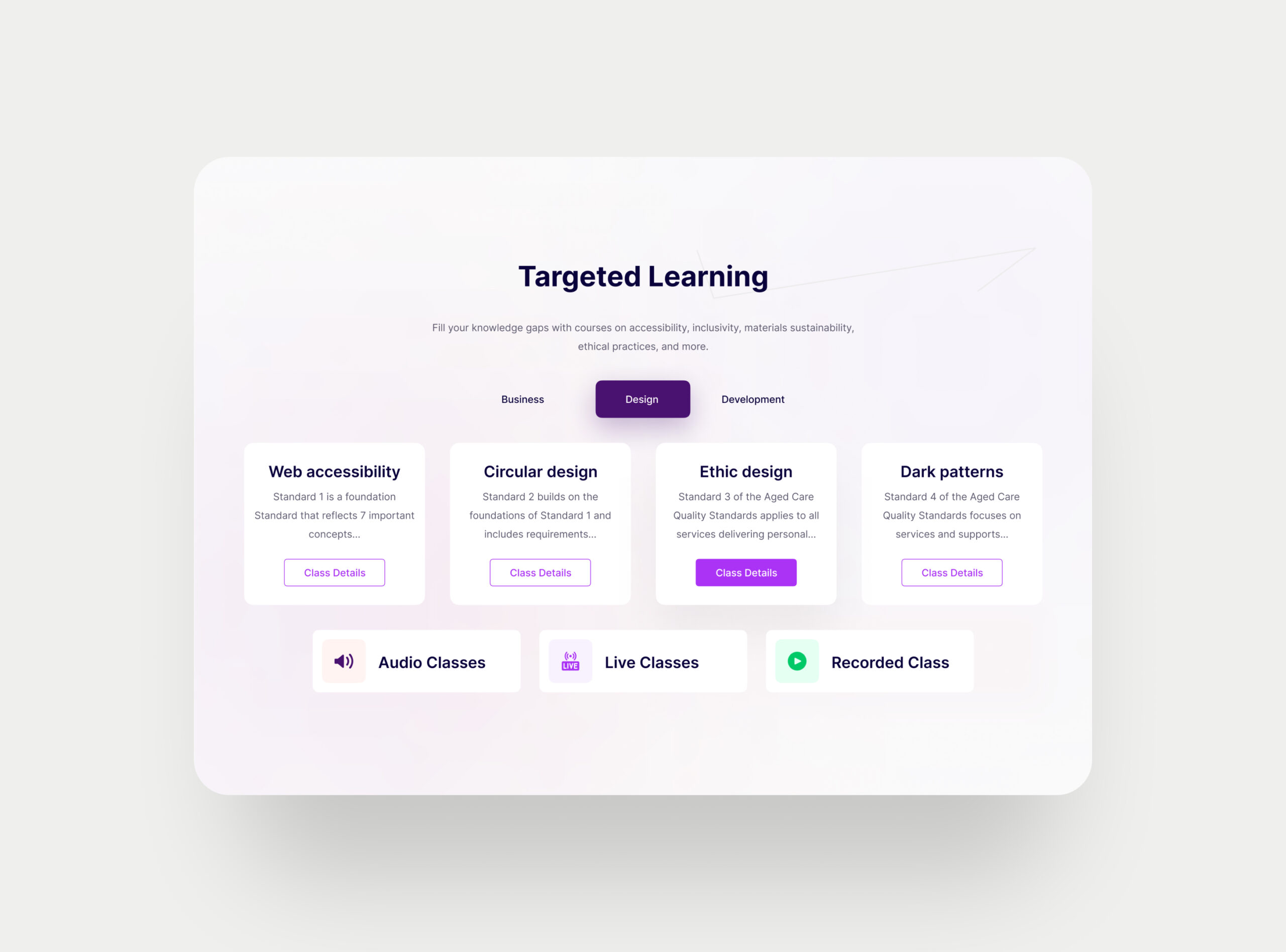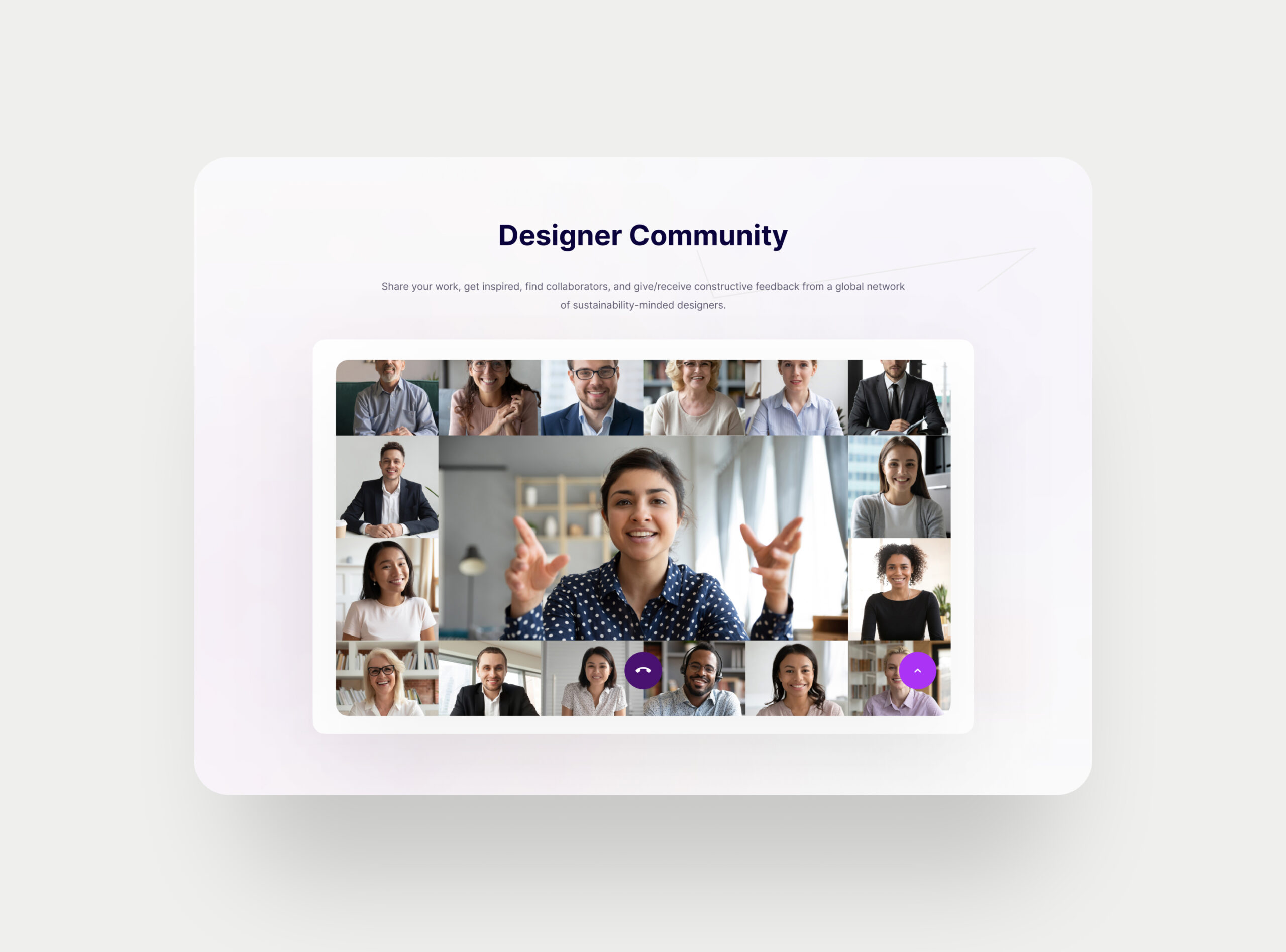Cloud-Based Design Sustainability Platform – Case Study
PROFESSIONAL PROJECT
- Award-Winning Project: Cloud First – Tech4Good Dragons’ Den Winner

BRIEF
Context
Cloud First in partnership with Tech4Good: Dragons’ Den, part of the UKI Tech Learning Festival, challenged innovators to design cloud-based solutions addressing the UN Sustainable Development Goal #11: Inclusive, safe, resilient, and sustainable cities and settlements.
Project Summary
February 2022
United Kingdom
My Role
I pitched creative solutions for the project (ideation process) and then designed user-friendly mockups (wireframes and prototypes) that were easy to navigate and understand. This involved working closely with a UX researcher.
PROBLEM STATEMENT
The Sustainability Knowledge Gap
The complexity of sustainable product design demands expertise in areas like accessibility, inclusivity, environmental impact, materials sourcing, and ethical production practices. This is because creating inclusive, safe, resilient, and sustainable cities and settlements (UN Sustainable Development Goal #11) goes far beyond just urban design projects. Everyday consumer products also play a critical role. However, designers often lack the specialised knowledge needed to ensure their projects meet these high standards across all dimensions.

solution
Collaboration + Knowledge: The Platform for Change
A collaborative platform powered by a Cloud First LMS designed to empower designers with knowledge and community.
Key features include:
Diagnostic Assessments: Expert-developed quizzes designed to evaluate design projects across key sustainability dimensions. Assessments cover accessibility, inclusivity, environmental impact, ethical sourcing, and responsible production practices. Designers receive targeted recommendations to strengthen their work, ensuring that the systems and products they create serve all users equitably and promote a healthier planet.
Targeted Learning: A curated library of courses addressing identified weaknesses in areas like accessibility, sustainability, ethics, circular design, and product lifecycle analysis. This empowers designers to bridge knowledge gaps and design products that have a positive long-term impact on communities and the environment.
Community Building: Tools for connection, project sharing, feedback exchange, and collaboration across design disciplines. This fosters a global network where designers can tap into the collective expertise of sustainability-minded professionals. Sharing ideas, getting constructive feedback, and finding collaborators leads to better design solutions that prioritize inclusion and long-term positive impact.
DESIGN PROCESS
The Design Sprint: A Timeline
Our design process was heavily influenced by the concepts outlined in Jake Knapp’s book, “Sprint: How to Solve Big Problems and Test New Ideas in Just 5 Days“. The Sprint framework provided us with a structured approach to rapidly move from problem definition to a tested prototype.
Due to the competition’s accelerated timeline, we adapted the classic Sprint method. We emphasized focused brainstorming to rapidly address the sustainability knowledge gap during our “Map” phase. The “Sketch” phase heavily leveraged our UI/UX expertise to quickly develop wireframes and prototypes. The “Test” phase was tailored to gather critical feedback from potential users.

KEY FEATURES
Your Design Health Check: Get a comprehensive sustainability diagnosis.
- Questions developed by a multidisciplinary expert committee ensure a holistic assessment of projects.
- Quick assessments across inclusivity, accessibility, viability, sustainability, and safety provide designers with a clear snapshot of their project’s strengths and weaknesses.
- A scoring system highlights areas of improvement, empowering designers to take targeted action.

Fill Your Knowledge Gaps. Fuel Your Designs: Level up with curated courses
- Curated courses on key sustainability areas address knowledge gaps, transforming designers into sustainability champions.

Better Design Through Collaboration: Get the support you need.
- Project sharing and feedback tools foster constructive critique and collaborative problem-solving.
- Collaboration features encourage cross-disciplinary partnerships, leading to innovative solutions that address the complexities of sustainable design.

CHALLENGES
Overcoming Obstacles: Lessons from the Sprint
- Time Constraints: The competition’s deadline needed a rapid design sprint. This required focus, efficient ideation techniques, and the ability to prioritise features for the MVP (Minimum Viable Product).
- Limited Cloud First Knowledge: To fully leverage the power of Cloud First technology, we sought consultations with Accenture experts. This collaboration helped us bridge the knowledge gap, ensuring the platform’s technical foundation aligned with best practices.
OUTCOMES AND IMPACT
Victory and Validation: Proving the Concept
- Competition Success: Winning recognition at the Tech4Good Dragons’ Den validated the idea’s potential for real-world impact.
- Positive Reception: The judges’ interest in potential implementation within Accenture demonstrates the platform’s relevance to professional design contexts.
NEXT STEPS
Design a Better Future: What’s Next?
Building upon our success at the competition, we’ve conducted a second brainstorming session to think of strategies for escalating the solution’s development and impact.
Here are some of the key areas we’re focusing on:
- Service Model: Transitioning to a service model would extend the platform’s reach and ensure ongoing maintenance and development.
- Scalability:
- Tailored Assessments: Developing diagnostic tools for specific categories (e.g., consumer electronics, toys, urban infrastructure) would provide even more targeted guidance to designers.
- Adapting to Other Disciplines: Exploring how a similar model could empower fashion designers, industrial designers, and others would expand the positive impact on a wider scale.
- Open Source: Consider elements for an Open Source Software (OSS) model to encourage community contributions, fostering continuous improvement and customisation of the platform.
- Partnerships: Strategic partnerships with content providers, sustainability organizations, or design schools could bolster the platform’s resources and reach a wider audience.
REFLECTIONS
Lessons Learned: Insights for Future Impact
- Teamwork: Our collaborative UX/UI approach was critical for success within the tight timeframe. Diverse perspectives and complementary skillsets led to a robust solution.
- Design Thinking: The structured yet flexible nature of the Design Thinking process allowed us to quickly define the problem, generate ideas, prototype, and refine based on feedback – all essential for delivering an impactful platform under pressure.
